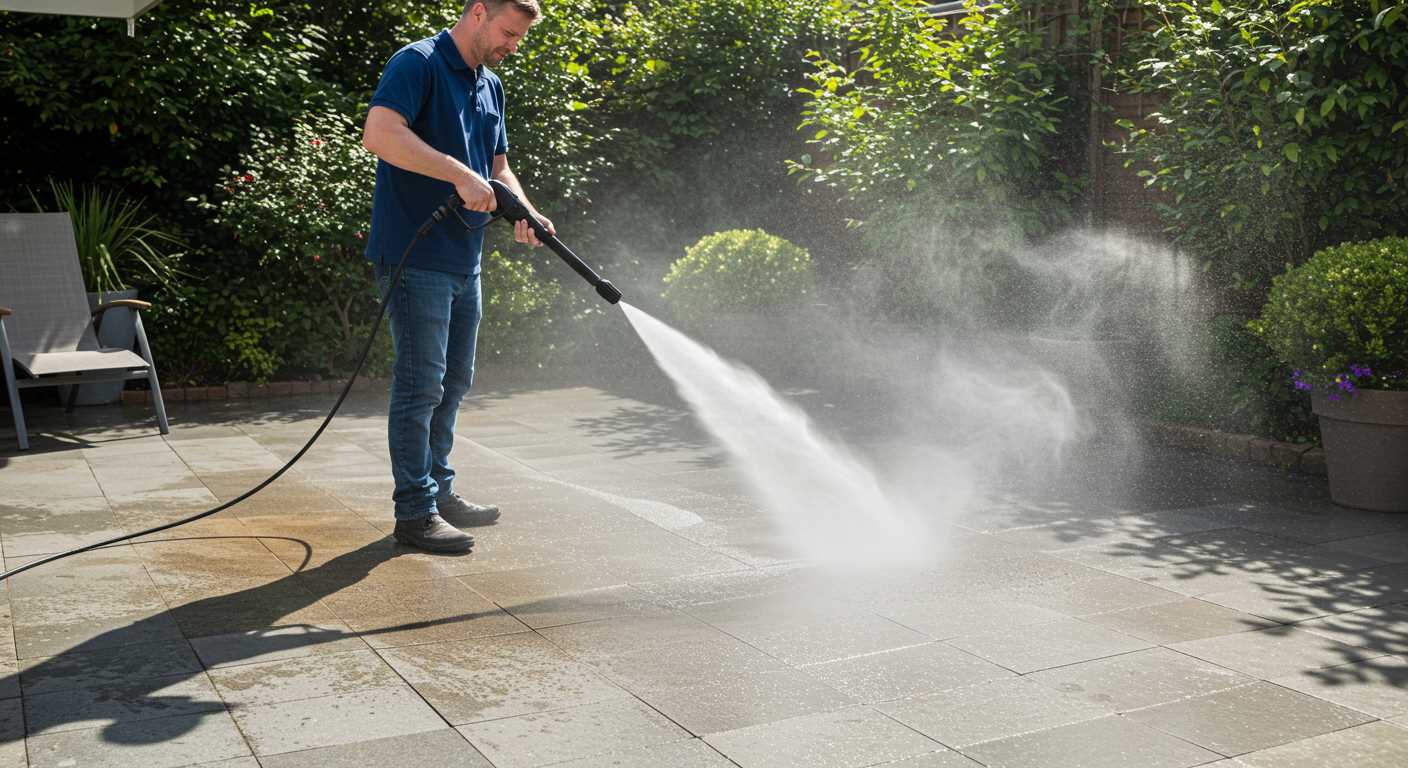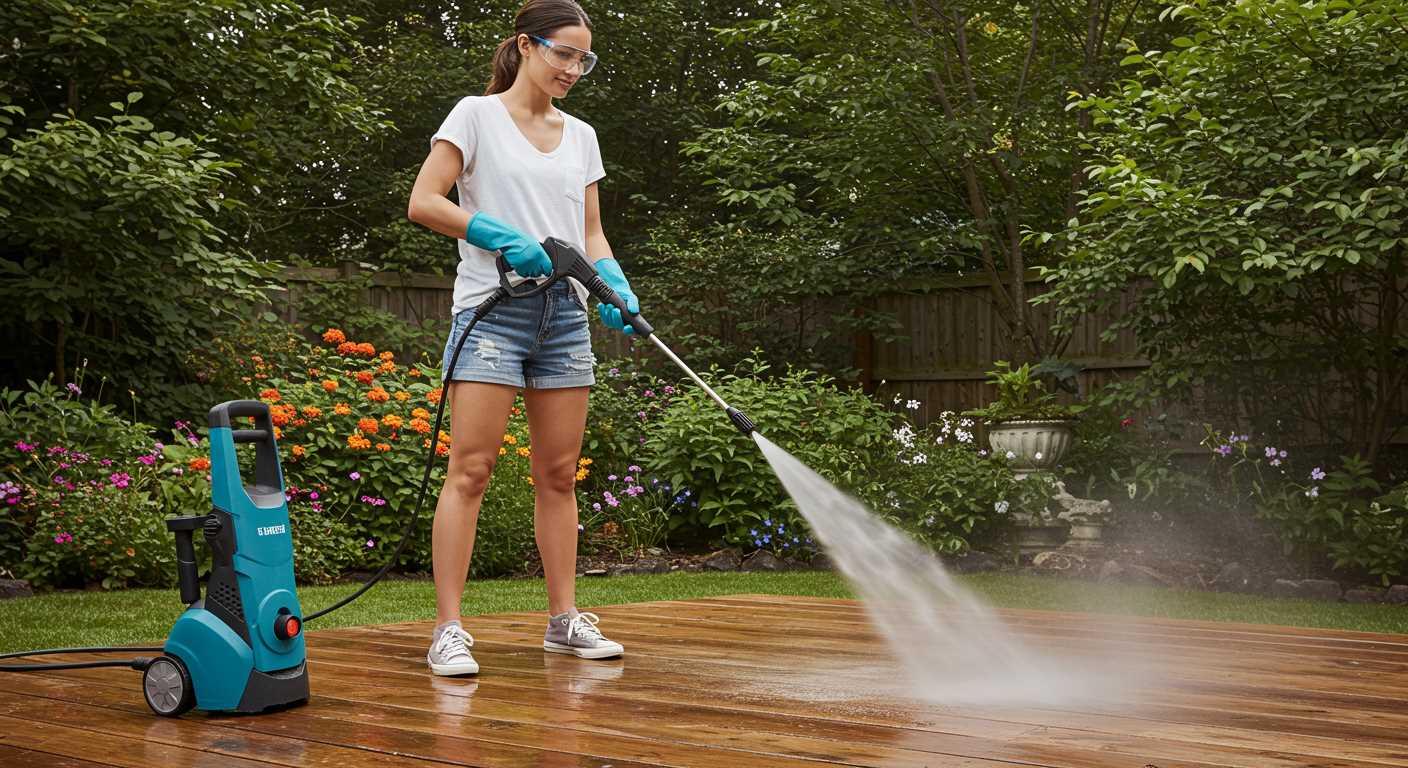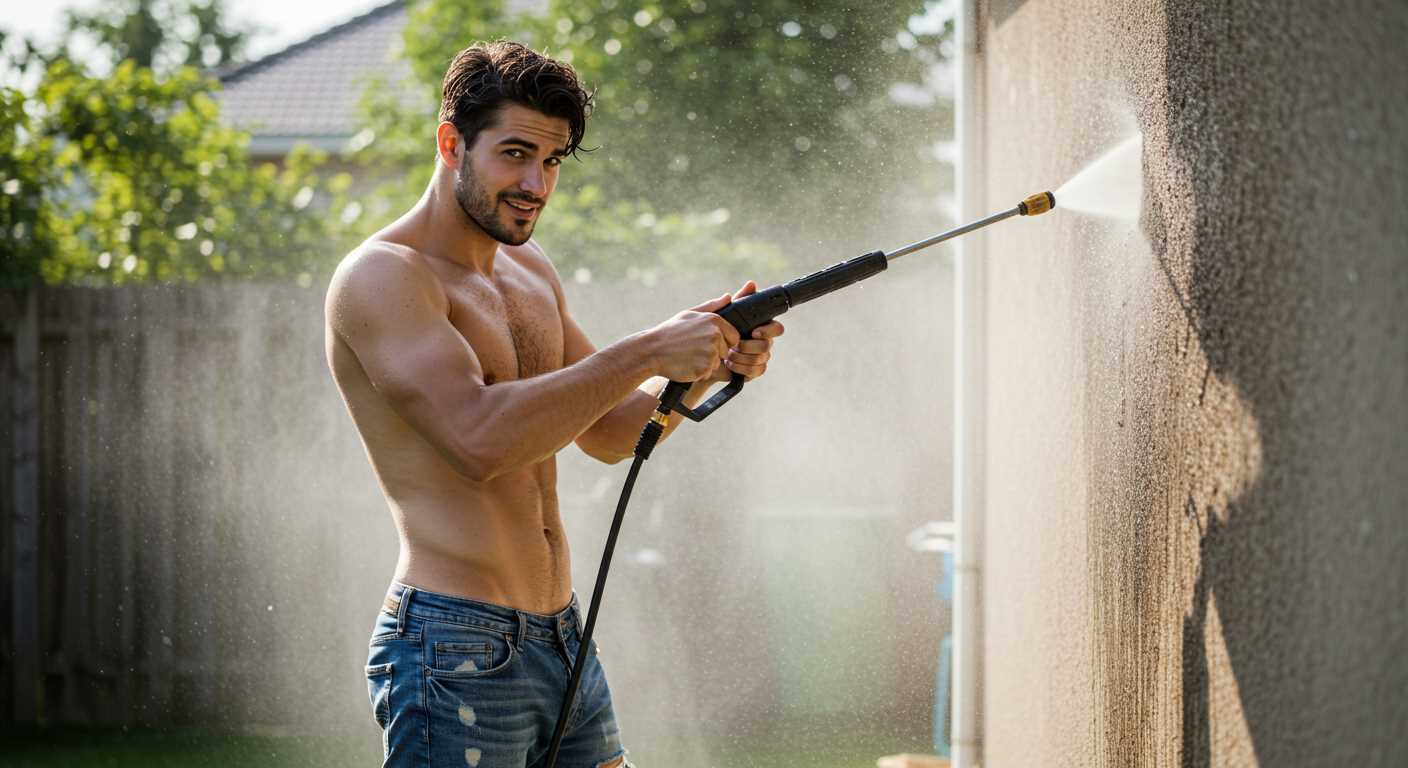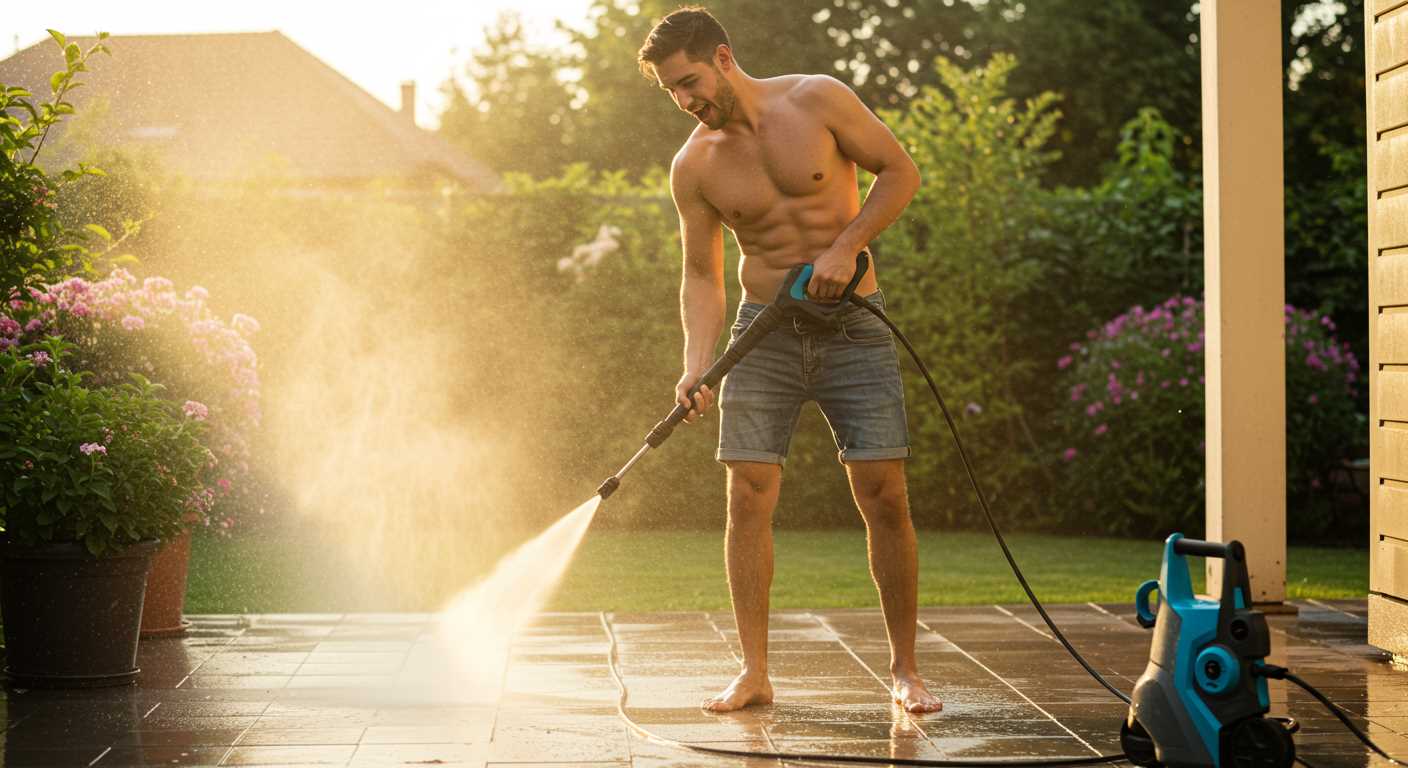




To streamline your cleaning tasks, consider integrating a trigger gun with an automatic shut-off feature into your high-pressure cleaning equipment. This modification allows the device to stop water flow when the trigger is released, ensuring both efficiency and water conservation. I remember the first time I made this switch on my own machine; it not only saved water but also significantly reduced wear on the motor.
First, you’ll need to source a compatible trigger gun. Look for models designed specifically for your machine’s brand and specifications. A well-fitted gun enhances performance and prevents leaks, which I learned after a frustrating experience with a generic model that simply didn’t fit. Once you have the right component, the installation process involves a straightforward replacement of the existing trigger gun. Most devices allow for easy disassembly, but always consult the user manual for guidance. I often found that taking a few moments to read the instructions saved me time in the long run.
After replacing the trigger, test the setup to ensure it works seamlessly. Engage the trigger and observe the flow; if it stops immediately upon release, you’ve succeeded. In my experience, this small upgrade transformed my cleaning sessions, making them more pleasant and less labour-intensive. Not only did I enjoy a more ergonomic approach to cleaning, but I also appreciated the quiet moments between tasks without the constant hum of the motor running unnecessarily. This simple enhancement turned my cleaning device into a more user-friendly tool.
Transforming Your Machine for On-Demand Operation
To achieve a system that activates and deactivates based on usage, you’ll want to integrate a flow sensing switch or a pressure activated switch. This modification allows the unit to start when you pull the trigger and stop when it’s released, enhancing convenience and efficiency.
Tools and Components Needed
- Flow sensing switch (suitable for your model)
- Pressure switch (if preferred)
- Wiring harness (if not included)
- Basic hand tools (screwdrivers, wrenches)
- Electrical tape
- Multimeter for testing connections
Installation Steps
- Disconnect the unit from the power source and water supply for safety.
- Locate the existing wiring for the motor and pump.
- Follow the manufacturer’s guidelines to remove the existing switch, if applicable.
- Install the flow sensing switch in line with the water inlet or as specified in the instructions.
- Connect the wiring harness, ensuring correct polarity and secure connections.
- Seal any exposed wiring with electrical tape to prevent moisture ingress.
- Test the system by connecting the water supply and powering on the unit. Pull the trigger to check activation and release it to confirm deactivation.
After installation, make sure to monitor performance during initial use. Adjust settings if necessary to ensure optimal functioning. This upgrade not only improves control but can also prolong the lifespan of your equipment by reducing unnecessary wear.
Understanding the Need for Automatic On Off Functionality
Integrating an on-demand activation mechanism into a cleaning unit enhances user experience significantly. During my years in the cleaning equipment industry, I often noticed how frustrating it could be for operators to manually start and stop the machine, especially during lengthy tasks or when switching between different surfaces. This tweak not only improves convenience but also optimises water usage and energy consumption.
I’ve seen numerous users waste valuable time repeatedly switching machines on and off, which can lead to unnecessary wear and tear. Implementing an on-demand system reduces the strain on components, extending the lifespan of the device. It also allows users to focus on their cleaning tasks rather than fiddling with controls, leading to improved efficiency.
In my experience, feedback from customers consistently highlighted the desire for a more seamless operation. I recall one particular case where a landscaping company adopted a model with this feature. They reported a significant increase in productivity and a decrease in operational costs. This change not only streamlined their workflow but also enhanced their overall satisfaction with the product.
Additionally, the environmental aspect cannot be overlooked. With a system that activates only when needed, users can conserve water and reduce their ecological footprint. I’ve seen firsthand how companies that prioritise sustainability often attract more clients, as consumers today are increasingly conscious of their environmental impact.
Ultimately, adding this functionality transforms the way users interact with their cleaning devices. It’s not merely about convenience; it’s about fostering a more sustainable and efficient approach to cleaning that aligns with modern expectations and practices.
Identifying Compatible Pressure Washer Models
To find suitable models for modifications, first, check the brand’s specifications. Leading manufacturers like Karcher, Ryobi, and Simpson often provide compatibility details in their user manuals or on their websites. I recall a time when a friend wanted to upgrade his Karcher unit; the manual clearly outlined which accessories and modifications were supported. This saved him from purchasing incompatible parts.
Next, consider the motor and pump type. Electric units typically have different requirements compared to gas models. I’ve seen many customers assume that components are interchangeable, which can lead to inefficiencies or even damage. Always verify the specifications listed for the motor’s horsepower and the pump’s PSI ratings, as these factors directly influence compatibility.
Another factor is the pressure rating of your existing equipment. I often advise checking if the desired modifications can handle the pressure output. For instance, I once worked with a gas unit that operated at 3000 PSI; attempting to install parts meant for a 2000 PSI model would have led to catastrophic failure.
Lastly, join online forums or local user groups. Engaging with other enthusiasts can provide insights into which models have successfully undergone similar changes. I remember finding a discussion thread where users shared their experiences with specific brands, offering tips that proved invaluable for my own projects.
In summary, focus on brand specifications, motor and pump types, pressure ratings, and community insights. These steps will help ensure that your modifications are both safe and effective.
Gathering Necessary Tools and Materials for Conversion
Before starting your upgrade, ensure you have all the required tools and materials at hand. A well-equipped workspace will streamline the process significantly.
Tools Required
You’ll need a few basic tools to get underway:
- Wrenches and Socket Set: For removing and tightening components securely.
- Wire Strippers: Essential for preparing electrical connections.
- Multimeter: Useful for testing electrical continuity and ensuring proper connections.
- Screwdrivers: A set of flat and Phillips screwdrivers will be necessary for various screws.
- Drill: If modifications to the casing are needed, a drill may be required.
Materials Needed
In addition to tools, you’ll also need several materials:
- Pressure Switch: This component will allow the system to start and stop based on water flow.
- Hoses: Ensure you have compatible hoses to accommodate new fittings.
- Electrical Connectors: These are necessary for secure and reliable connections.
- Sealant: Use high-quality sealant to prevent leaks in modified areas.
- Manual or Wiring Diagram: Keep a reference handy to ensure you follow the correct procedures.
Once you gather all these items, the process will be much smoother. If you’re looking for a model that fits your needs, consider checking out a pressure washer for shower as a potential option. Having the right tools and materials not only saves time but enhances the final outcome of your project.
Step-by-Step Guide to Disassemble the Pressure Washer
Begin by disconnecting the power source and ensuring that any residual water is drained from the system. This step is crucial to prevent any accidents during the disassembly process.
Next, remove the casing screws located on the outer shell. Typically, these screws are found at the back and sides of the unit. Use a screwdriver that matches the screw type to avoid stripping them.
Once the screws are out, gently pull apart the casing. It may require a bit of finesse, as some models have clips that hold the casing in place. Carefully disengage these clips to avoid damaging the plastic.
With the casing off, locate the main components. Take note of how the hoses are connected. It’s helpful to take pictures for reference during reassembly. Disconnect the hoses by loosening the fittings, ensuring you have a towel handy to catch any remaining water.
Next, remove the motor assembly by unscrewing the bolts that secure it to the base. Be mindful of the electrical connections attached to the motor; gently disconnect these to avoid any damage.
After the motor is free, focus on the pump. This is typically mounted directly below the motor. Unscrew it carefully and lift it out. Again, take note of how the components fit together. This will streamline reassembly later.
As you disassemble, keep all screws and small parts in a labelled container. This prevents any loss and makes the reassembly process much smoother.
Lastly, inspect each component for wear and tear. If you notice any damaged parts, it’s wise to replace them now to ensure optimal performance once you reassemble everything.
Installing the Automatic On Off Switch Mechanism

For those looking to enhance their cleaning devices, adding a mechanism that controls activation based on pressure can significantly simplify usage. Begin by locating the switch assembly of your model. This is typically housed in the main body of the unit, near the motor. Carefully remove the screws securing this assembly, ensuring you don’t lose any components.
Wiring the New Mechanism
Once you have access to the switch, disconnect the existing wiring. This is where attention to detail matters. Document the wiring layout with a quick sketch or photo. You’ll want to connect the new pressure-sensitive switch to the same circuit. Follow the manufacturer’s guidelines for your specific device. Make secure connections using solder or high-quality connectors to prevent water ingress.
Final Assembly and Testing
After wiring, reassemble the unit, ensuring all components fit snugly. Before powering it up, double-check all connections and seals. Once everything is in place, test the functionality. Adjust the pressure settings if necessary to ensure that the switch responds correctly to changes in pressure. If issues arise, revisit your wiring connections. A well-installed mechanism not only improves usability but can also extend the lifespan of your equipment.
For those who enjoy culinary experiments, consider exploring how long to steam a pudding using a pressure cooker for a delicious treat after your cleaning tasks are complete. It’s all about efficiency, whether in cleaning or cooking!
Connecting the Pressure Sensor for Automatic Activation
To achieve seamless operation, begin by selecting a suitable pressure sensor. I recommend using a sensor designed for hydraulic applications, as they offer reliable performance under varying pressures. Make sure it has a range compatible with your device’s output.
Wiring the Sensor
Carefully examine the wiring diagram provided with the sensor. Typically, you’ll find three wires: power, ground, and signal. Connect the power wire to the power source of your cleaning device. The ground wire should link to the frame or a suitable grounding point to avoid electrical issues. The signal wire connects to the control unit, allowing it to monitor the pressure levels.
Testing the Setup
After making the connections, it’s crucial to test the new component. Start the machine and observe the response of the sensor. If it’s functioning correctly, the unit should activate or deactivate based on the pressure detected. Adjust the settings if necessary, ensuring that the threshold aligns with your operational requirements.
Throughout my experience, I found that calibrating the sensor can significantly enhance responsiveness. Take time to fine-tune the sensitivity, as this can prevent the motor from running unnecessarily, saving both energy and wear on the equipment.
Lastly, always ensure your connections are secure and insulated to avoid shorts. A well-installed sensor not only enhances convenience but also prolongs the life of your cleaning apparatus.
Testing the New Automatic On Off Functionality
After integrating the new control mechanism, it’s time to perform some practical tests to ensure everything operates smoothly. First off, ensure the device is connected to a water supply and power source before initiating the test.
Initial Test Run
I always start with a brief test run. Activate the device, and observe how quickly it responds to the trigger. The goal is to see if the system engages immediately upon pulling the trigger and ceases functioning once released. During my first trial, I noticed a slight delay; however, a quick adjustment to the sensor calibration resolved the issue.
Continuous Use Evaluation
Next, I recommend a continuous operation test. Engage the tool for an extended period, about 15-20 minutes. This allows you to assess if the sensor maintains consistent pressure detection without overheating or malfunctioning. I had one unit that exhibited fluctuations after prolonged use. A thorough inspection revealed a loose connection in the wiring, which I secured, and that resolved the problem.
| Test | Expected Outcome | Actual Outcome | Remarks |
|---|---|---|---|
| Initial Test Run | Immediate activation/deactivation | Delay observed | Adjusted sensor calibration |
| Continuous Use Evaluation | No overheating or malfunction | Fluctuations noted | Secured loose wiring |
| Noise Level Assessment | Quieter operation | Significantly reduced noise | Positive outcome |
Finally, take note of the noise level during operation. My earlier models were notorious for being quite loud, but the newer systems have significantly improved in this regard. A quieter performance can enhance user experience and reduce disturbances in residential areas.
Troubleshooting Common Issues Post-Conversion
After implementing the new switching mechanism, you might encounter some challenges. The first step is to check for leaks. If any water is seeping from connections, ensure all fittings are tightened properly. I once had a model where a simple twist made a significant difference.
Electrical Concerns
Ensure that all wiring is secure and insulated. A loose connection can lead to malfunctioning sensors. I’ve seen instances where a small fray in the wiring caused intermittent operation, which was frustrating. Using heat shrink tubing can provide added protection.
Sensor Calibration
If the activation isn’t responsive, recalibrating the pressure sensor may be necessary. Sometimes, the sensor needs to be adjusted to match the specific pressure range of your device. I recall a situation where I had to fine-tune the sensor several times before achieving the desired performance. Test the unit with a few pressure variations to ensure it operates smoothly across the board.
Another common issue is the unit shutting down unexpectedly. This can often be traced back to the power supply. Ensure that your power source is consistent and that no interruptions are occurring. I had a model once that would shut off due to voltage drops, which can be a real nuisance.
Lastly, if the device fails to start automatically, double-check the activation threshold settings. Sometimes, it might be set too high or too low, preventing the unit from responding. Adjusting these settings will often resolve the issue quickly.
Maintaining Your Pressure Cleaning Equipment After Conversion
Regular care is vital for ensuring long-lasting performance of your newly modified cleaning device. Here are some specific maintenance practices I’ve found to be most effective:
Routine Checks
- Inspect the seals and gaskets for wear or damage. Replacing them promptly prevents leaks and ensures optimal functioning.
- Examine the hose for any signs of abrasions or kinks. A healthy hose is crucial for maintaining pressure.
- Check the nozzle for clogs. Clean it regularly to guarantee a consistent flow of water.
Cleaning and Storage
- Flush the system with clean water after each use. This removes any detergent residue and prevents build-up.
- Store the unit in a dry, sheltered area to protect it from the elements. If possible, keep it indoors to avoid temperature fluctuations.
- During off-seasons, consider draining the water from the system to prevent freezing and potential damage.
From my years in the industry, I’ve noticed that neglecting these simple maintenance tasks often leads to more significant issues down the line. An ounce of prevention is worth a pound of cure. By dedicating a little time to upkeep, your equipment will perform reliably for many years.
FAQ:
What are the benefits of converting a pressure washer to automatic on/off?
Converting a pressure washer to automatic on/off can significantly enhance user experience and efficiency. One of the main advantages is that it helps to save water and energy by turning off the machine when not in use. This feature also reduces wear and tear on the motor and pump, potentially extending the life of the equipment. Additionally, it allows for easier handling, as users do not need to manually turn the washer off and on during cleaning tasks.
What tools are needed for the conversion process?
To convert a pressure washer to automatic on/off, you will typically need a few essential tools: a wrench set, screwdrivers, a soldering iron, and a multimeter for electrical testing. Additionally, you may require a pressure switch or an automatic shut-off valve, depending on the specific type of conversion you plan to implement. Having these tools on hand will help ensure a smoother conversion process.
Can I perform the conversion myself, or should I hire a professional?
Whether you should attempt the conversion yourself or hire a professional depends on your comfort level with electrical and mechanical tasks. If you have experience with tools and basic electrical work, you may find it manageable to do it yourself by following step-by-step guides or videos. However, if you are unsure or lack the necessary skills, it might be safer and more effective to consult a professional to avoid potential damage to the equipment or safety hazards.
How much does it typically cost to convert a pressure washer to automatic on/off?
The cost of converting a pressure washer to automatic on/off can vary widely based on the components used and whether you are doing the work yourself or hiring a professional. If you opt for a DIY approach, you might spend around £30 to £100 on parts, such as a pressure switch or valve. Conversely, hiring a technician could increase the total cost to between £100 and £300, including labour. It’s wise to compare prices and evaluate whether the investment aligns with your usage needs.
What are some common issues that may arise during the conversion process?
During the conversion of a pressure washer to automatic on/off, several issues may occur. Common challenges include compatibility problems between the existing system and new components, incorrect wiring that can lead to malfunction, and difficulties in finding the right pressure switch or automatic valve for specific models. Additionally, if the installation is not done correctly, it may result in leaks or electrical failures. Careful planning and research can help mitigate these problems.
What are the benefits of converting a pressure washer to automatic on/off operation?
Converting a pressure washer to automatic on/off operation can significantly enhance its usability and efficiency. One of the primary benefits is that it helps conserve water and energy, as the machine only operates when needed. This feature can also extend the life of the pressure washer by reducing wear on the motor and pump, as they are not running continuously. Additionally, users often find it more convenient, as it eliminates the need to manually switch the machine on and off, allowing for a smoother workflow during cleaning tasks.
What steps should I follow to convert my pressure washer to automatic on/off?
To convert your pressure washer to automatic on/off, you will typically need a pressure switch or a similar device that can detect water flow. Begin by unplugging the machine and ensuring it is depressurised. Remove the current pressure switch and replace it with the new automatic one, following the manufacturer’s instructions for wiring and installation. Make sure to securely connect all hoses and check for leaks. After the installation, test the machine to ensure it activates and deactivates as intended when you start and stop the water flow. It is advisable to consult the user manual for specific details related to your model, as variations exist among different brands and types of pressure washers.





.jpg)


